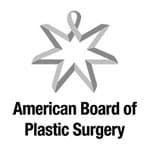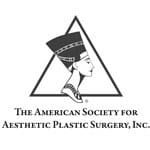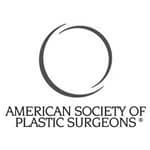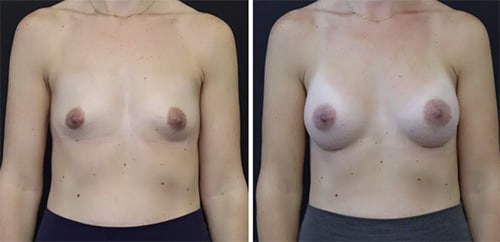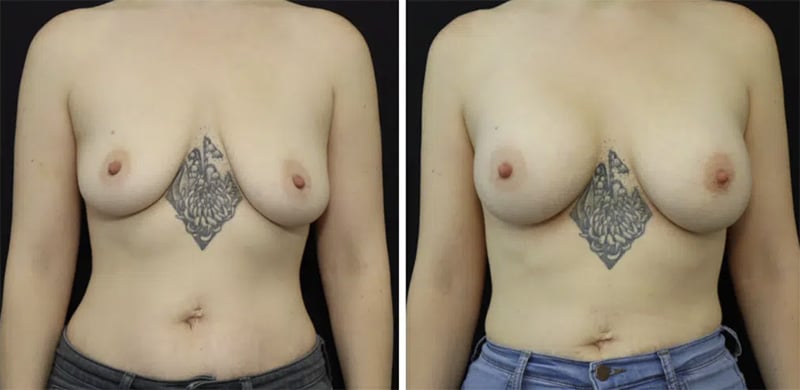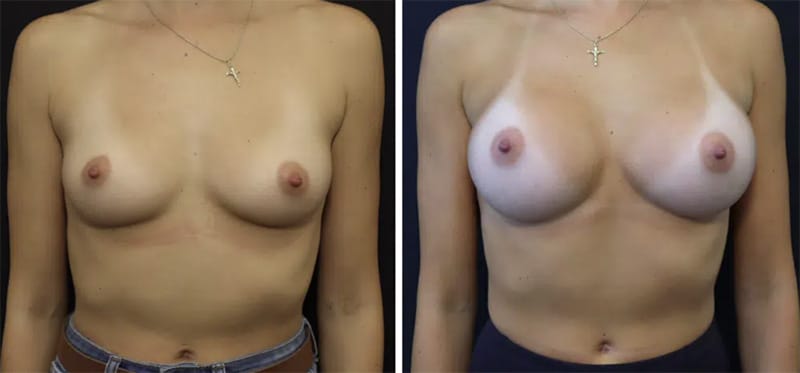Breast
Breast Augmentation San Francisco – Breast Implant
Are you considering breast implants in San Francisco? Dr. David Sieber, MD stands out as a top plastic surgeon in the city. With his expertise, you can enhance your bust line by undergoing breast implant surgery, achieving increased volume, refined contours, and a renewed sense of sensuality.
What is breast augmentation?
Breast augmentation, or augmentation mammoplasty, is a surgical procedure aimed at enhancing breast size. Breast augmentation involves inserting breast implants beneath breast tissue or chest muscles. While some seek it for increased confidence, others undergo it as part of breast reconstruction for various conditions.
In a personalized consultation, Dr. Sieber advises on incision type, implant form tailored to you, optimal breast implant placement, and the most suitable types breast implants. Opt for breast augmentation alone or combined with a breastlift or other breast procedure enhancements. Dive deeper into this with our informative FAQs.
Dr. David Sieber – Breast Augmentation Surgeon
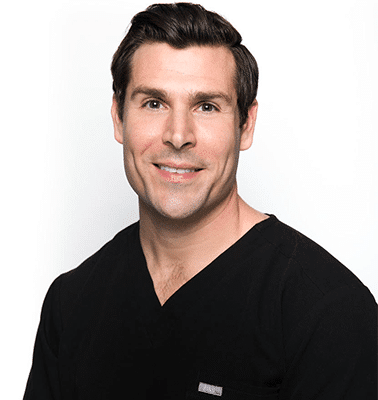
Dr. Sieber went on to become certified by the American Board of Plastic Surgery and has done hundreds of breast augmentation surgeries over the last 9 years of practice. Book your consultation today!
Breast Augmentation Candidates
Ideal candidates for breast augmentation are those with pragmatic expectations, seeking improvement rather than perfection in their breasts appearance. They are typically in good physical and emotional health, having carefully contemplated their aesthetic enhancement objectives. Conversely, individuals who harbor overall dissatisfaction with their bodies or breasts hold unrealistic expectations for outcomes, or feel coerced by external influences, are generally not well-suited for a breast enlargement surgery.
For further details regarding eligibility for breast implants, please don’t hesitate to get in touch with Dr. Sieber at our cosmetic surgery office.
Types of Breast Implants
Before proceeding with breast implants, you and Dr. Sieber will collaborate to identify the most suitable types of breast implants for your specific breasts needs and preferences.
Saline Breast Implant
Saline implants are filled with saline at the time of surgery, which means the incisions are smaller because the silicone shells can be placed while empty. Saline implants typically cost less than silicone.
However, saline tend to feel slightly firmer to the touch and may show more rippling on the sides of the breasts. If saline implants rupture, the volume will immediately diminish.
Structured saline breast implants
Structured implants are designed with a sterile saltwater filling and incorporate an internal framework to enhance the implant’s tactile resemblance to natural breast tissue.
Silicone Implants
Silicone implants are filled with a silicone gel that is soft and feels natural to the touch. They tend not to ripple as much as saline implants. In the unlikely event that implants rupture, there will be no apparent change in the size of the breast because the silicone will not migrate.
Women who choose silicone implants should have regular MRIs every 3-5 years to confirm their breast implants have not ruptured.
Breast Implant Shape
Implant shape pertains to the two primary options provided by manufacturers: round or teardrop. Additionally, breast implant shells come in either smooth or textured variations.
Round Implants
Smooth and round, these breast implants offer a natural look and feel, especially when positioned beneath the muscle using the appropriate technique, creating a teardrop appearance. Dr. Gray’s patients overwhelmingly favor this popular choice.
Gummy Bear Breast Implants/Tear Drop Implants
Form-stable implant are commonly known as gummy bear or tear drop breast implants due to their ability to retain their breast shape even if the implant shell is compromised. The silicone gel within these implants has a denser consistency compared to traditional silicone gel implants, resulting in a firmer feel.
Shaped gummy bear breast implants are designed with increased projection at the bottom and a tapered shape towards the top. However, if a shaped implant rotates, it can result in an abnormal appearance of the breast, necessitating an additional corrective procedure. The placement of gummy bear implants typically requires a slightly longer incision in the skin.
Breast Implant Placement
Breast implant placement is a critical aspect of breast augmentation surgery, significantly impacting the final aesthetic outcome and the patient’s satisfaction. There are two primary implant placement options: subglandular and submuscular.
Dual plane breast augmentation is a specialized technique in breast implant surgery that combines aspects of both subglandular and submuscular implant placements. This method involves positioning the upper part of the implant under the pectoral muscle while the lower part is placed beneath the breast glandular tissue. The dual plane technique aims to provide the benefits of both traditional placement methods.
Subglandular placement, also known as above-the-muscle placement, positions the implant directly behind the breast tissue but in front of the pectoral muscle. This approach typically involves a shorter recovery time and may be preferable for patients with adequate natural breast tissue to cover the implant, providing a natural look and feel. However, this method might result in more noticeable implant edges, rippling, or capsular contracture (scar tissue formation around the implant).
Submuscular placement, or under-the-muscle placement, involves inserting the implant beneath the pectoral muscle. This method generally offers a more natural appearance, particularly in patients with less natural breast tissue, as the muscle provides an additional layer of coverage, reducing the visibility of implant edges and rippling. Additionally, submuscular placement has been associated with a lower risk of capsular contracture. However, this technique may involve a longer and potentially more uncomfortable recovery period due to the muscle’s involvement.
The choice between subglandular and submuscular placement depends on various factors, including the patient’s anatomy, aesthetic goals, lifestyle, and the surgeon’s recommendation.
Breast Implant Placement Video
Breast Augmentation Before and After
Breast Enlargement Recovery
Breast Augmentation Recovery common symptoms after a breast enlargement procedure include:
- Soreness
- Swelling
- Bruising
- Numbness
- Hypersensitivity
- Pressure in both armpits and along the sternum*
Notify Dr. Sieber immediately if you notice increased pain and sudden swelling on one breast. We will start you on a scar therapy program one week after surgery to ensure you heal with the best possible scar.*
The Rapid Recovery Technique
The Rapid Recovery Breast Augmentation Technique minimizes trauma to the tissue — thereby reducing pain and bruising. It allows most patients to return to activities of daily living in 24 hours.*
This technique is not one specific thing, but an entire process. Before placing the final implant, the pocket will be irrigated with an antibiotic solution to prevent postoperative infection and reduce the risk of capsular contracture. All incisions will then be closed with absorbable sutures. Book your consultation today!
Rapid Recovery Breast Augmentation Video
Breast Implants Risks
Breast implants come with potential risks. However, to mitigate these risks, Dr. Sieber follows what is called the 14-Point Plan, developed by Dr. William Adams.
This plan includes 14 individual steps, which together minimize your risk of capsular contracture and other potential complications with breast implants such as:
- Excessive bleeding
- Infection
- Reactions to anesthesia
- Oversensitivity in nipples
- Permanent nipple numbness
- Implant rupture
- Implant rippling
Additionally, Dr. Sieber does not use sizers during surgery as this can increase the risk of complications, postoperative pain, and prolonged recovery.
Breast Augmentation Cost
Breast Augmentation in San Francisco cost will be influenced by a number of factors, including what type of breast implants you choose, who your board certified plastic surgeon is, and where you decide to get your breast enhancement surgery performed.
In the end, the cost of your breast implant surgery will depend on these factors and may include additional charges such as an anesthesiologist’s fee, surgical facility fees, prescription medication costs, and expenses for things like medical tests and postoperative garments.
Finally, if you plan to undergo another breast surgery such as a reduction, augmentation breast lift or other procedures like a Brazilian butt lift, tummy tuck or liposuction, this will influence your breast implants cost as well. Book your consultation today!
FREQUENTLY ASKED QUESTIONS
What implants feel the most natural?
Silicone breast implants look and feel more natural, even when placed above the muscles of the chest, and are unlikely to ripple, wrinkle, bisect, or otherwise become aesthetically impacted.
When can I sleep on my side after breast augmentation?
You’ll need to sleep on your back for at least the first 48 hours. After that, pay attention to your body. Patients will likely want to continue sleeping on their backs for several weeks.
How long does it take breast augmentation scars to heal?
Breast augmentation scars should be completely healed after six months to a year.
Can you enlarge breasts without surgery?
Achieving long-term breast enlargement without surgery is attainable through the utilization of an external tissue expander. Consistent and dedicated use of the expander leads to progressive breast growth. To ensure optimal outcomes and reduce the likelihood of drop-outs, it is crucial for women to be well-informed about the time and lifestyle commitment required for this approach.
How long should breast augmentation last?
Currently, modern breast implants have an average lifespan ranging from 10 to 20 years, and in some cases, women retain their implants for more than 20 years. It’s crucial to understand that breast implants do not have a predefined expiration date or shelf life. The FDA does not classify breast implants as lifetime devices.
How long do gummy bear implants last?
On average, gummy bear implants have a lifespan of about 10-15 years. However, some patients may experience implant ruptures or leaks earlier or later than this timeline. Additionally, regular monitoring by a plastic surgeon is recommended to ensure the implants are functioning properly.
How do you know if you need a breast revision?
Experiencing pain or discomfort with breast implants can be indicative of various issues that may necessitate a breast implant revision. These concerns include capsular contracture, damaged lymph nodes, a developing seroma, pinched nerves, or improper implant placement. For individuals with silicone implants, pain could potentially signal a rupture or leakage in the implant. If you encounter any discomfort, it is essential to consult with your healthcare professional promptly for an accurate assessment and appropriate action.
How Is Breast Implant Size Measured?
When discussing breast implant size, individuals, including surgeons, typically refer to the volume in cubic centimeters. This crucial measurement indicates the space the implant occupies within the body.
- Small 150 – 200cc
- Medium 300 – 350cc
- Large Over 400cc
- Very large Up to 800cc
Will I have scar tissue after breast augmentation surgery?
Yes, scarring is a common side effect of breast augmentation surgery. The extent of scarring will depend on several factors, including the size of the incision, the type of implant used, the patient’s healing process, and the patient’s skin type.
What is the difference between breast augmentation and breast implants?
The key distinction between the two lies in this: Breast augmentation refers to the surgical procedure utilized for breast enhancement, whereas Breast implants serve as the mechanism deployed. Each is interdependent on the other to achieve the desired outcomes.
What is the success rate of surgery from breast augmentation?
The success rate of surgery for breast augmentation is noteworthy. Approximately 75 percent of women rated their breast firmness as “just right.” When evaluating the overall results, more than half of the patients awarded a perfect score of 10 on a scale of 1 to 10. Remarkably, nearly all patients (98 percent) expressed that the outcomes either met or exceeded their expectations.
Is augmentation breast lift included when a breast augmentation performed?
The combined procedure of a breast lift with augmentation, known as augmentation breast lift or augmentation/pexy, offers multiple benefits. With this approach, you can expect to achieve not only upper breast fullness but also enjoy the advantages of repositioned breasts and nipples.
Following the lift surgery, a healing period of 3-4 weeks is necessary, and a gradual return to regular activities is recommended, which also applies to augmentation/pexy lift patients.
Who is a good breast augmentation procedures candidate?
Prospective breast augmentation candidates should maintain excellent physical health, devoid of active infections, untreated cancer, or severe illnesses. If any medical concerns are present, it is crucial to openly communicate them with your surgeon. This allows the surgeon to assess your individual situation and determine the suitability of breast implant surgery for you.
How long are you in surgery while undergoing breast augmentation?
Breast augmentation is commonly performed as an outpatient procedure, with the option for some patients to stay overnight. While you’ll need to arrive early and have recovery time, the actual procedure typically takes only one to two hours.
Book Your Breast Augmentation Consultation?
Looking for the best board certified plastic surgeon for Breast Augmentation?
Call today at 415-915-9000 or schedule a breast augmentation consultation with Dr. Sieber and learn more about the most natural breast augmentation to increase your breast volume. Breast augmentation patients come from all over the Bay Area to seek breast augmentation.
*Disclaimer: Results may vary from person to person. Editorial content, before and after images, overview breast augmentation and patient testimonials do not constitute a guarantee of specific results.



